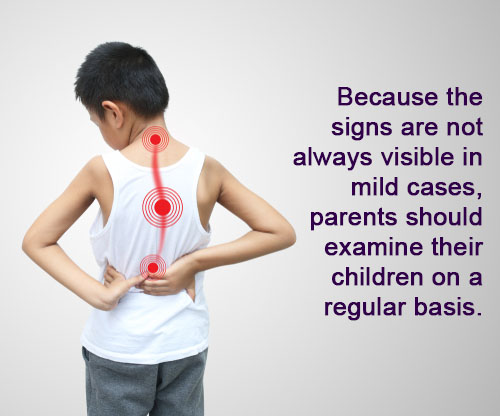Premature birth doesn’t end when a baby leaves the neonatal intensive care unit (NICU). For many families, it marks the start of a long, demanding journey shaped by medical follow-ups, developmental hurdles, and the constant hope that their child will catch up. This article breaks down the real challenges of prematurity — and what it takes to give these children the strongest possible start.
WORDS ASSOCIATE PROFESSOR DR KHINE PWINT PHYU AND ASSOCIATE PROFESSOR DR GANESH RAMACHANDRAN
 FEATURED EXPERT FEATURED EXPERTASSOCIATE PROFESSOR DR KHINE PWINT PHYU Head of Learning and Teaching School of Medicine Faculty of Health and Medical Sciences Taylor’s University |
 FEATURED EXPERT FEATURED EXPERTASSOCIATE PROFESSOR DR GANESH RAMACHANDRAN Head of School of Medicine Faculty of Health and Medical Sciences Taylor’s University |
According to the World Health Organization (WHO), one in every ten babies takes their first breath a little earlier than expected, arriving before their time and before the world is quite ready.
- Medically, a preterm birth is defined as any birth before 37 completed weeks of gestation, roughly 8 months.
- In Malaysia, the rate of preterm birth stood at 10.7% of live births in 2020.
The 2 key factors influencing a preterm infant’s outlook are:
- How early they are born
- How much they weigh at birth
For many families, that early arrival marks the beginning of a journey filled with hope, patience, and resilience.
LIFE BEYOND THE NICU
Beyond the neonatal intensive care unit (NICU), the experience of prematurity can continue to shape a child’s development and a family’s daily life long after those first fragile weeks.
It is often assumed that premature babies quickly catch up in growth and development, and that the most challenging phase ends after the first year.
However, while many preterm babies go on to thrive, some may face ongoing health or developmental hurdles that require extra care and support along the way.
Potential Complications
Complications may include:
- Respiratory distress syndrome (RDS). The premature baby’s lungs aren’t fully ready to breathe on their own, so they may need help with oxygen or ventilators until their lungs mature.
- Necrotizing enterocolitis (NEC), a serious gut problem where parts of the intestine become inflamed or even start to die. It can be life-threatening and often requires close monitoring or surgery.
- Sepsis or an infection triggering an extreme immune response that leads to organ damage and even death. Premature babies have weak immune systems, so even a small infection can get dangerous fast.
- Retinopathy of prematurity (ROP), a condition that sees abnormal blood vessels growing in the retina. If severe, it can harm vision or cause blindness.
- Intraventricular haemorrhage (IVH) or bleeding in in the tiny fluid-filled brain spaces called ventricles. Can range from mild to serious, sometimes affecting brain development.
- Periventricular leukomalacia (PVL) or softening of brain tissue near the ventricles, often caused by poor blood flow or oxygen. Can affect movement, coordination, or learning later on.
Some of these complications can result in long-term cognitive, motor, or sensory development challenges.
As children grow, some may require continued support such as speech or occupational therapy, or tailored education plans to help them reach their full potential.
Beyond Medical Care
For many parents, frequent hospital visits, therapy sessions, and specialist consultations can be overwhelming, especially while balancing work and family life.
Yet amid these challenges, countless families describe deepened resilience, stronger bonds, and a renewed appreciation for milestones that others may take for granted.
A BROADER PUBLIC HEALTH CHALLENGE AWAITS
The impact of prematurity stretches beyond individual families.
- Collectively, it is a public health concern that affects communities and healthcare systems worldwide.
- Structured early-intervention programmes in high-income countries have shown that timely therapy, follow-up care, and family education can significantly improve long-term outcomes.
In Malaysia, advanced neonatal care is available in many urban hospitals, but access to ongoing developmental support can still vary, particularly for underserved communities or those living in rural areas.
- Recognizing this gap, the Ministry of Health Malaysia has unified its strategies under the current national framework, Child Health 2021–2030, which aims to improve continuity of care through strengthened community health services, structured developmental surveillance and enhanced inter-sectoral collaboration.
- These initiatives mark encouraging progress toward ensuring every baby receives the right support from the very start.
PREVENTION AND EARLY DETECTION OF PRETERM BIRTH
Understanding and addressing the causes of preterm birth are equally vital.
- Around 75% of preterm births result from spontaneous labour.
- Others stem from maternal or fetal conditions such as pre-eclampsia, foetal growth restriction, gestational diabetes, placenta praevia, or placental abruption.
- Many of these situations require early delivery to safeguard the health of both mother and baby, decisions made carefully and compassionately by medical teams.
Early detection and intervention can make a world of difference.
- Women who have previously experienced preterm birth or are identified with a short cervix during pregnancy may benefit from preventive care such as hormone therapy or a minor surgical procedure for cervical support.
- If preterm birth becomes inevitable, medications such as steroid injections can help strengthen fetal lung maturity, while magnesium sulphate can reduce the risk of brain injury.
- Equally important is maternal education, to ensure that expectant mothers recognize early signs of labour and seek skilled care promptly.
- Continued efforts from public health authorities and maternal health programmes also play a vital role in extending these preventive services to all communities.
A CALL TO COLLECTIVE ACTION
As World Prematurity Day falls on 17 November, it is a time to honour the quiet courage of families whose babies are born too soon.
Behind every tiny heartbeat in an incubator lies a story of strength, love, and determination, of parents who never give up, and healthcare teams who go above and beyond every day.
Together, we can work toward a future where fewer babies are born prematurely, and where every child, no matter how early their journey begins, receives the care, compassion, and opportunity they need to thrive.
| This article is part of our series on facts and advice on matters related to pregnancy and children’s health. |








